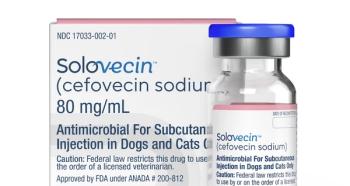Dietary factors can potentially modify some of the underlying processes involved in OA, including modulation of the inflammatory response, provision of nutrients for cartilage repair and protection against oxidative damage. Where effective, dietary management may help reduce or eliminate the need for conventional drugs, some of which are associated with adverse effects.
Amino acids
As the building blocks of proteins, amino acids play a role in the makeup of tissues and organs throughout the body. Methionine is a unique amino acid that produces several molecules that are essential for proper cell function. Methionine, which contains sulfur, can produce other sulfur-containing molecules in the joint and is involved in protein production. Manganese is an essential nutrient involved in many chemical processes in the body, including bone formation. Manganese plays a role in the health and maintenance of bone and cartilage in joints. In addition, manganese supports collagen formation for joint strength. Methionine and manganese are building blocks for cartilage in joints.
Carnitine is an amino acid that enables the body to turn fat into energy. Carnitine aids in muscle maintenance and transports long-chain fatty acids and their derivatives into the mitochondria of cells. By strengthening skeletal muscle and turning fat into energy, the severity of OA may be lessened.
Hyaluronic acid is a principal component of synovial fluid and works in the joint to maintain joint viscosity, aid in joint lubrication and help with shock absorption. Additionally, vitamins C and E are antioxidants that neutralizefree radicals to maximize mobility. N-acetyl-D-glucosamine “shortcuts” the glycosaminoglycan pathway to maintain healthy joint structure and function.
Omega-3 fatty acids
Omega-3 fatty acids have been shown to aid in canine OA management. Studies show that foods with high levels of total omega-3 fatty acids and eicosapentaenoic acid (EPA) can improve the clinical signs of canine OA.4,7-10
In normal canine cartilage, there is a balance between synthesis and degradation of cartilage matrix. In arthritic joints, damage to chondrocytes incites a viscous cycle that culminates in cartilage destruction, inflammation and pain. The mechanisms responsible for the demonstrated clinical benefits of omega-3 fatty acids include controlling inflammation and reducing the expression and activity of cartilage-degrading enzymes.
Cartilage degradation starts with loss of cartilage aggrecan followed by loss of cartilage collagens, resulting in the inability to resist compressive forces during joint movement. EPA significantly decreases the loss of aggrecan in canine cartilage by inhibiting the upregulation of aggrecanases by blocking the signal at the level of messenger RNA.4
Omega-3 fatty acids result in a decrease in membrane arachidonic acid (AA) levels because omega-3 fatty acids replace AA in the substrate pool. This produces an accompanying decrease in the capacity to synthesize inflammatory eicosanoids from AA. Studies have documented that inflammatory eicosanoids produced from AA are depressed when dogs consume foods with high levels of omega-3 fatty acids. In addition to its role in modulating the production of inflammatory eicosanoids, omega-3 fatty acids have a direct role in the resolution of inflammation.
Green-lipped mussel
Shellfish supplements have been used to manage arthritis in humans and, in recent years, interest has focused on the potential benefits of a nutritional supplement prepared from the New Zealand green-lipped mussel (GLM), Perna canaliculus.11 GLM is known to contain anti-inflammatory components and other nutrients that benefit joint health. Heat processing of GLM has been shown to destroy its activity. Therefore, the processing of whole GLM and incorporation of the GLM product into food products requires special care and processing techniques to avoid destroying any efficacy of the final product.
GLM has been shown to contain a unique omega-3 fatty acid, eicosatetraenoic acid, which appears to act as a dual inhibitor of arachidonic acid oxygenation by both the cyclooxygenase and lipoxygenase pathways.12 GLM is a rich source of nutrients, including glycosaminoglycans (e.g. chondroitin sulfates), vitamins, minerals and omega-3 series polyunsaturated fatty acids.
Conclusion
Nutrition, and specific nutrients, provide an effective and safe way to manage OA in dogs. Foods with high levels of omage-3 fatty acids have the dual benefit of controlling inflammation and pain while slowing disease progression by decreasing cartilage degradation.
Successful treatment and prevention of obesity and OA require a comprehensive approach that includes preventive measures and a multimodal treatment program. Documenting the presence of comorbid conditions is critical.
Clinical signs of OA are often not obvious on examination, particularly early in the disease process. Early diagnosis of OA facilitates early intervention, which will likely improve long-term outcome. Nutritional management should be part of the multimodal approach in dogs with joint disease. Mobility is powerful and allows humans and dogs to live healthily and happily in body and mind. Joint health is fundamental to moving in comfort and should be addressed with every dog that comes into the hospital.
References
- DeCamp CE, Johnston SA, Déjardin LM, et al. Arthrology. In: DeCamp CE, Johnston SA, Déjardin LM, et al, Eds. Brinker, Piermattei, and Flo's Handbook of Small Animal Orthopedics and Fracture Repair, 5th ed. St. Louis, MO: Elsevier; 2016.
- Anandacoomarasamy A, Caterson I, Sambrook P, et al. The impact of obesity on the musculoskeletal system. Int J Obes. 2008;32:211-222.
- Anderson KL, O’Neill DG, Brodbelt DC, et al. Prevalence, duration and risk factors for appendicular osteoarthritis in a UK dog population under primary veterinary care. Sci Rep. 2018;8(5641):1-12.
- Burns KM. Are your patients suffering in silence? Managing osteoarthritis in pets. NAVTA J. 2011:16-22.
- 2018 Pet obesity survey results: U.S. pet obesity rates plateau and nutritional confusion grows. Association for Pet Obesity Prevention website: https://petobesityprevention.org/2018. Published March 12, 2019. Accessed June 12, 2020.
- Kealy RD, Lawler DF, Ballam JM, et al. Evaluation of the effect of limited food consumption on radiographic evidence of osteoarthritis in dogs. J Am Vet Med Assoc. 2000;217:1678-1680.
- Roush JK, Dodd CA, Fritsch DA, et al. Multicenter practice assessment of the effects of omega-3 fatty acids on osteoarthritis in dogs. J Am Vet Med Assoc. 2010;236(1):59-66.
- Fritsch D, Allen TA, Dodd CE, et al. Dose-titration effects of fish oil in osteoarthritic dogs. J Vet Intern Med. 2010;24:1020-1026.
- Roush JK, Cross AR, Renberg WC, et al. Evaluation of the effects of dietary supplementation with fish oil omega-3 fatty acids on weight bearing in dogs with osteoarthritis, 3-month feeding study. J Am Vet Med Assoc. 2010;236(1):67-73.
- Fritsch DA, Allen TA, Dodd CE, et al. A multi-center study of the effect of dietary supplementation with fish oil omega-3 fatty acids on carprofen dosage in dogs with osteoarthritis. J Am Vet Med Assoc. 2010;236:535-539.
- Bui LM, Bierer TL. Influence of green lipped mussels (Perna canaliculus) in alleviating signs of arthritis in dogs. Vet Ther. 2001;2:101-111.
- Treschow AP, Hodges LD, Wright PF, et al. Novel anti-inflammatory omega-3 PUFAs from New-Zealand green-lipped mussels, Perna canaliculus. Comp Biochem Physiol B Biochem Mol Biol. 2007;147:645-656.
Kara Burns is a licensed veterinary technician with masters’ degrees in physiology and counseling psychology. She is founder and president of the Academy of Veterinary Nutrition Technicians and teaches nutrition courses around the world. Kara is a consultant for Lintbells, manufacturer of YuMOVE, the U.K.’s #1 hip and joint supplement for dogs. She’s a member of, and holds board positions with, numerous associations, including the American Academy of Veterinary Nutrition, Western Veterinary Conference, NAVTA, Pride VMC and the Pet Nutrition Alliance.







